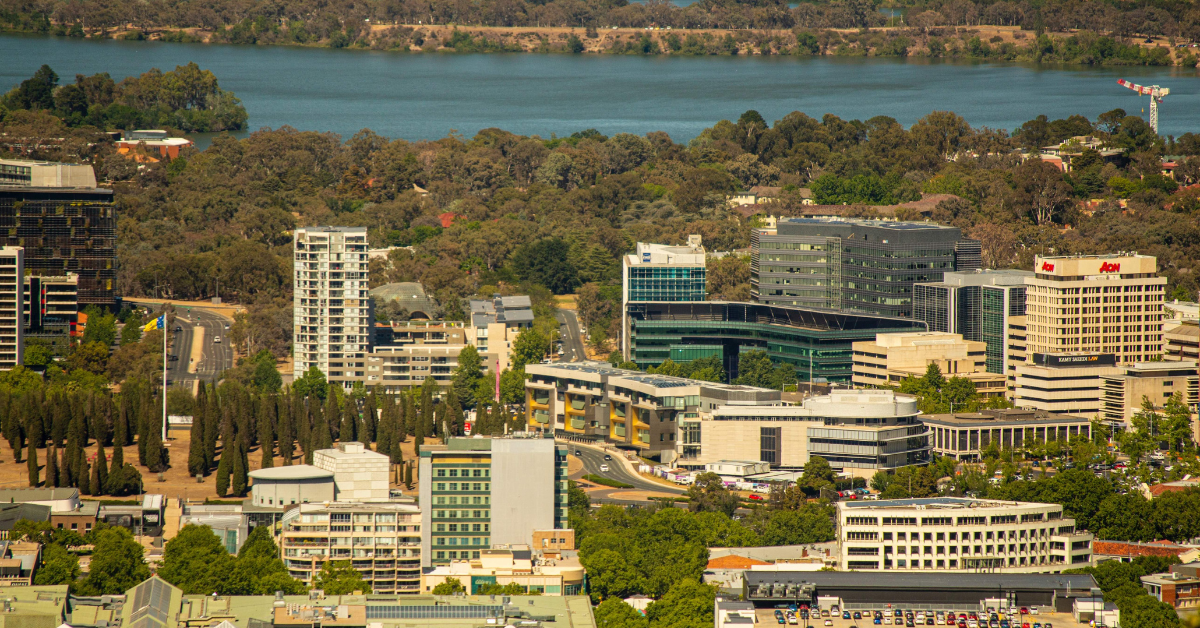Federal Budget 2022: Developers Take a Lead in Federal Budget’s Housing Commitment

Since the last Federal Budget was handed down in March 2022, Australians have experienced a sharp increase in the cost of living with inflation surging to a level not seen since the introduction of the GST in 2000. On top of this, the RBA has increased the official cash rate six times, lifting by 2.50 percentage points since May, to 2.60%. More positively, during this time commodity prices have helped drive higher GDP growth and labour markets have remained strong with unemployment falling to its lowest level since the 1970’s.
The driver behind the October 2022/23 Federal Budget is so the new Federal Government can clarify and outline their first term priorities. It also resets the budget from the policies and promises made by the previous government, prior to the election, to ensure that the Australian economy is strong enough to weather the current and upcoming global economic challenges.
There is a focus on tackling costs of living pressures, without adding inflationary pressures, with major spending commitments for families, health, aged care, housing and the NDIS. The latest budget also sets out additional spending on new, and previously announced, infrastructure projects.
No single measure contained in this year’s budget is expected to have a direct or substantial effect on property markets over the remainder of the 2023 financial year. That said, the announcement of a new National Housing Accord between Federal, State and Local Governments as well as institutional investors and the construction industry will help boost housing supply will have a positive impact in delivering additional social and affordable housing over the medium to long term.
There are also a number of incentives to help older homeowners downsize, first home buyers in regional areas and funding for a shared equity scheme to enable low- and middle-income earners to purchase a home. Indirectly, the combination of infrastructure commitments, policies to address cost of living pressures and improve wage growth are expected to boost spending, confidence, and investment which should feed through to local economies and suburban property markets.
Key takeaways
- Budget deficit of -$36.9b expected in 2022/23, down from -$78b in March.
- A new Housing Accord with a target to build 1 million homes
- A new $10b Housing Australia Future Fund
- Funding for the Regional First Home Buyer Guarantee
- $324 million allocated to the Help to Buy shared equity scheme
- Additional incentives to assist older Australians downsize
- An additional $8.1 billion in road and rail infrastructure spending
- More fee-free TAFE and university places to tackle the skills shortage
- Cheaper Childcare for 1.26 million families
- An expansion of the Paid Parental Leave scheme to 26 weeks
Property market implications and measures
Property markets across Australia are currently moving through a different part of the cycle now compared to the last Federal Budget handed down in March. Higher interest rates and cost of living pressures have impacted buyer demand and property values. At the same time, increased tenant demand and a lack of properties available for lease have driven rents higher and vacancy rates lower.
The latest 2022/23 Federal Budget contains a range measures which will directly assist and support property markets across the country. Positively, there are a number of measures which look to address supply side challenges, particularly for social and affordable housing. These include the delivery of new homes into the market via a National Housing Accord and changes to assist older Australians looking to downsize.
Supply side measures
One million new homes under a National Housing Accord – A new accord struck between Federal, State and Local governments, institutional investors, superannuation funds and the construction industry will aim to build one million new homes over the 5-years from 2024. As part of this, the budget commits $350 million over 5-years to deliver 10,000 affordable dwellings, at an energy efficiency rating of 7 stars or greater. States and territories will also support up to 10,000 additional affordable homes. Under the Accord, the Government will help fund the gap between market rents and subsidised rents to make affordable housing projects commercially viable.
Increasing affordable housing - The Government will invest $10 billion in the newly created Housing Australia Future Fund, to be managed by the Future Fund Management Agency. The aim is to generate returns to fund the delivery of 30,000 social and affordable homes over 5-years and allocate $330 million for acute housing needs. Initially the returns from the fund will:
- Repair, maintain and improve housing in remote indigenous communities.
- Provide crisis and transitional housing for women and children fleeing domestic and family violence.
- Build more housing and fund specialist services for veterans who are experiencing homelessness.
National Housing Infrastructure Facility - The latest budget also expands the remit of the $1 billion National Housing Infrastructure Facility. Allowing them to allocate up to $575 million to unlock over 5,500 projected new dwellings, accelerate housing supply and seek to attract more institutional capital.
More time to downsize – The budget extends from 12-month to 24 months the exemption of home sale proceeds from pension asset testing. Giving pensioners more time to move into their next home before their pension is affected. The government is also expanding access to downsizer superannuation contributions for people aged 55 to 59.
Downsizer contributions - The Government will allow more people to make downsizer contributions to their superannuation, by reducing the minimum eligibility age from 60 to 55 years of age. The downsizer contribution allows people to make a one-off post-tax contribution to their superannuation of up to $300,000 per person from the proceeds of selling their home. Both members of a couple can contribute, and contributions do not count towards non-concessional contribution caps.
Demand side measures
Regional First Home Buyer Guarantee – Under this policy, which began on 1st October 2022, 10,000 places are available each financial year to help eligible regional first homebuyers purchase a new or existing homes with a deposit of as little as 5 per cent. This measure will be funded by redirecting funding from the previously announced Regional Home Guarantee.
Help to Buy shared equity scheme – The budget commits $324 million to help establish a shared equity scheme. This scheme will assist 10,000 home buyers each year with eligible home buyers needing a minimum deposit of 2%, with an equity contribution from the Federal Government of up to a maximum of 40% of the purchase price of a new home and up to a maximum of 30% of the purchase price for an existing home.
Defence Home Ownership Assistance Scheme – This policy provides $46.2 million to assist current and former ADF members to purchase their own home.
Housing policy and advice
A new National Housing Supply and Affordability Council - The budget provides for $15.2 million to establish this new body to independently advise on housing policy. Particularly, on how to improve housing supply and affordability. It will also report on housing policy issues and collect data.
National Housing and Homelessness Plan – The budget allocates $13.4 million over 4-years to develop a national strategy to address the challenges facing the housing and homelessness sector. The Plan will set out reforms needed to make it easier to buy or rent a home and assist homeless Australians.
Infrastructure
Infrastructure is vital to ensure our cities, suburbs and towns work efficiently and that all Australians are provided with basic services. Well-funded and planned infrastructure helps reduce commute times, increases productivity, boosts local employment opportunities and makes outer-ring suburbs and regional areas more accessible and attractive. It also plays an important economic role by creating jobs and supporting businesses.
The latest 2022/23 budget allocates $8.1 billion over 10-years to new and existing road and rail infrastructure projects across Australia. The Government has paused or axed a number of previously announced projects, that are yet to begin, and redirected the money into new priority areas and projects.
Major road and rail infrastructure spending by state
NSW – $1.4 billion
- $500 million to start corridor acquisition and planning of the high-speed rail line between Sydney and Newcastle.
- $300 million for the Western Sydney Roads Package ($50 million for Castlereagh Connection, $37 million for Richmond Road and $75 million for the North West Growth Corridor).
- $268.8 million for the New England Highway
VIC - $2.6 billion
- $2.2 billion for the Suburban Rail Loop in Melbourne.
- $150 million for Camerons Lane Interchange at Beveridge
- $125 million for Barwon Heads Road Upgrade – Stage 2
- $57 million for Ison Road Overpass
QLD – $2.1 billion
- $866.4 million to upgrade of the Bruce Highway
- $400.0 million for the Inland Freight Route upgrades
- $400.0 million for Beef Corridors
- $210.0 million for the Kuranda Range Road upgrade
WA - $634.8 million
- $400.0 million for the Alice Springs to Halls Creek Corridor upgrade
- $125.0 million for electric bus charging infrastructure in Perth
SA - $460 million
- $400.0 million for the South Australian component of the Freight Highway Upgrade Program
TAS - $78 million
- $48.0 million for the Tasmanian Roads Package
NT - $550 million
- $350.0 million to seal the Tanami Road and Central Arnhem Road
ACT - $85.9 million
- $85.9 million in funding for the Canberra Light Rail Stage 2A project
Other infrastructure spending
- $250 million for Phase 4 of the Local Roads and Community Infrastructure Program
- $60 million towards the upgrade of the runway at Hobart Airport
- $2.4 billion to NBN Co over 4-years from 2022–23 to upgrade the National Broadband Network to deliver fibre-ready access to a further 1.5 million premises by late 2025
- $1.9 billion investment for the development of the Middle Arm Sustainable Development Precinct in the Northern Territory.
DISCLAIMER - The information provided is for guidance and informational purposes only and does not replace independent business, legal and financial advice which we strongly recommend. Whilst the information is considered true and correct at the date of publication, changes in circumstances after the time of publication may impact the accuracy of the information provided. LJ Hooker will not accept responsibility or liability for any reliance on the blog information, including but not limited to, the accuracy, currency or completeness of any information or links.
Share


